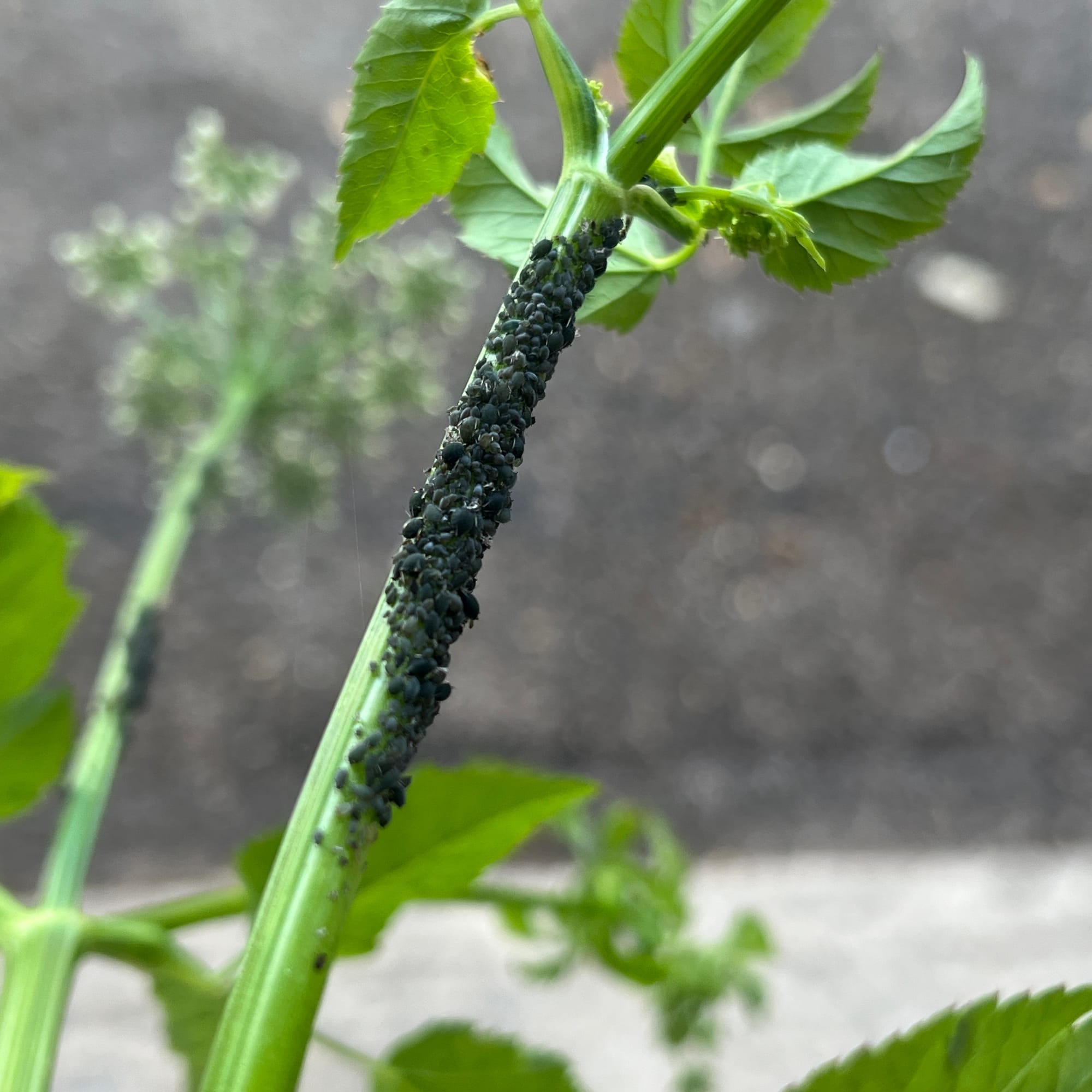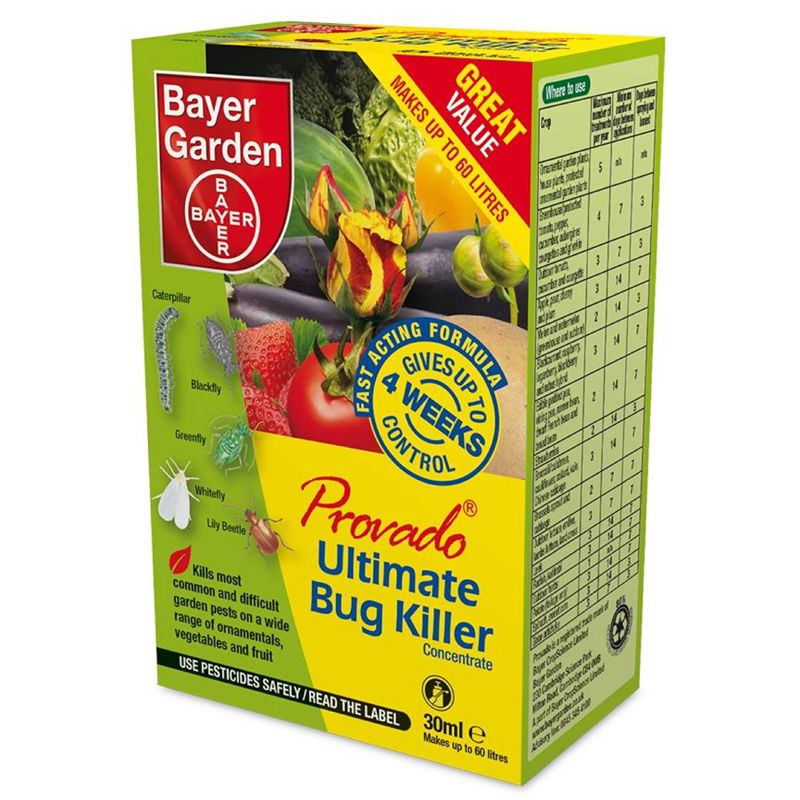Aphis fabae
Contents
- Top Tips & Info
- Symptoms
- Susceptible Plants & Parts
- Actions Needed (Includes Pros & Cons of Chemical or Organic Based Pesticides)
- Ways to Prevent an Attack in the Future
Need the answer to a specific plant or pest query? Book a 1-to-1 video call with THE HOUSEPLANT DOCTOR™, the website's friendly author, to overcome and address your niggling problem! Available on iMessage, WhatsApp, Facebook Messenger & more.
Top Tips & Info
- Eradication Difficulty - Easy
- Life Cycle - Up to twenty-five days.
- The female can lay up to twenty eggs a day - five hundred in total.
- Blackfly will attack all plant parts above the soil, most notably being the new growth and flowers.
- Remove and crush all of the visible bugs using your fingers or a damp cloth.
- Prune off the severely affected growths and any flowers that house the infestation.
- Take the plant outside and perform a gentle hose-down. Aim at the cubbyholes for complete obliteration and replace the top inch of the soil to remove any live bugs that have fallen.
- Allow the plant to dry off before applying either an organic or chemical-based pesticide. THE HOUSEPLANT DOCTOR™ recommends using a non-toxic product like Andermatt's BugNet Killer Spray for indoor Blackfly infestations.
- Repeat the wiping, hosing-down and pesticide steps every 7 - 14 days, for the next month. Quarantine the affected plants to avoid spreading the infestation for at least a month, although Blackfly tend to infest one plant at a time.
What are the Symptoms of Blackfly on Houseplants?
Blackfly can attack all plant sections above the soil line. Not only will you notice the live bugs, but after a while, you'll also see white exoskeletons that look a little like Whitefly - these are the casings that are left behind between transitions. Fortunately, they won't do too much damage quickly, meaning that you'll still have time to save it from dying. Immediately keep the affected plant away from others to prevent a further infestation.
Here's an example of what Blackfly looks like on a houseplant.
 Blackfly on an Umbrella Tree. The white 'bugs' are actually their dead exoskeletons that has been exfoliated, which is why the white 'bugs' don't move.
Blackfly on an Umbrella Tree. The white 'bugs' are actually their dead exoskeletons that has been exfoliated, which is why the white 'bugs' don't move.
What are the most Susceptible Houseplants & Where do Blackfly live on them?
The main sites of infestation are on the weakest tissue of the plant, which includes the developing leaves, flowers and the flower shafts. Blackfly can, however, attack all non-wooded structures of a plant on thinner-leafed plants like Indoor Herbs. Cacti and Succulents are almost always Blackfly-free.
Plants - Most species are susceptible to this pest, including Indoor Herbs, Oxalis triangularis, Roses, Streptocarpus & Umbrella Trees.
What are the Actions Needed to Eradicate Blackfly from Houseplants?
1. Prune away the new growths or flower stalks even if no pests are visible. If you can't remove the new growth or flowers, rub your fingers across the affected areas to destroy their mouthparts, although this won't entirely eradicate the population.
2. Decide whether to use an organic or chemical-based pesticide. Of course, using the organic route is both natural and beneficial for the plant, but will generally work slower than the latter. Keep reading to find out about the different options to consider.
3. Keep the affected plant away from others in a quarantined room until the symptoms have subsided for at least four weeks. Always be wary of a relapse, and keep an eye out for possible outbreaks for several months after the last sighting.
Extra Tip: Although you should perform the wiping and hosing-down process BEFORE each pesticide application, you can wash the foliage at any given time to keep the infestation under control.
Organic Pesticides
Predatory Mites - Releasing Predatory Mites on your affected houseplant's foliage is a more natural approach to controlling the infestation. THE HOUSEPLANT DOCTOR™ using a product like Andermatt's BugNet which is non-toxic and gets to work within a few hours of application. Get 15% of an order with our code 'JOE15' here!
Garlic Water - The scent of garlic will quickly deter the inhabitants from your plant. To create the homemade spray, place a garlic clove in boiled water and allow to sit for around twenty minutes. Spray the entire foliage once the temperature cools down, empathising the infestations and specific bugs. Unfortunately, the remedy must come wholly in contact with the pests to entirely kill them, meaning that precision is critical. You'll immediately notice a significant decrease in the overall population of the infestation, but repetition is vital. Spray the foliage weekly for around a month with a gentle hose; always quarantine the plant until there are no signs of an attack for a month. Allowing a cooling-off' period after the last visible attack will ensure that the infestation won't return later down the line. Leftover garlic should be used within one week of mixture, or it'll go off. The remedy can be applied both either cool or warm, with no difference between the two.
Insecticidal or Horticultural Soap is another popular organic pesticide on the market, and there are two versions to consider. The first way is by purchasing an RTU (ready-to-use) spray bottle, which can be immediately used on the plants. Although most garden centres will stock this, it's far more economical to purchase the second option - concentrated bottles. This method comes with pro's and con's but is far cheaper to use if you have multiple infestations. It's self-explanatory and highly beneficial for the outbreak as long as you use the correct levels of dilution - the only downside is its availability in local centres. It's best to buy this option online as there are many different companies to choose from, with some being cheaper than others.
 Garlic water is the ukhouseplants' recommended organic remedy for treating Blackfly.
Garlic water is the ukhouseplants' recommended organic remedy for treating Blackfly.
Natural Predators - The last non-organic method is by acquiring adult ladybirds or green lacewings. Although buying insects may be deemed as cruel or inappropriate, it's a natural, and least time-consuming way to remove the pests. Many online stores will sell the insects, all at varying prices and quantities. Once you've obtained the predators, release them in different sections of the plant, favouring the most infested areas first. They'll make their way around your plant, digesting both the eggs and the adults, leaving you with a potentially pest-free plant. Keep the plant in an enclosed transparent box with the insects, to maximise destruction. Unfortunately, this method can take several days to work and could even be unsuccessful, which is why other methods are favoured.
Chemical Pesticides
Provanto - 'Bayer Garden Provado Ultimate Fruit and Vegetable Bug Killer Concentrate' works IMMEDIATELY after one application. It's a concentrated product, meaning that you'll have to dilute it with the appropriate amount of water. Spray both sides of the leaves, along with any cubbyholes that could house the infestation. Keep the plant away from other specimens once there are no signs of an outbreak for over a month. Chemical-based pesticides should only be used as a last-resort measure due to the risk of affecting other biodiversity.
Rubbing Alcohol - If you're looking for something with even more strength, try an Isopropyl Rubbing Alcohol, which can be bought from many online stores. This pesticide will work immediately, killing the bugs within a few hours of contact. Follow the manufacturer's recommendations and repeat hosing the plant down and pesticide application steps fortnightly until the infestation has elapsed. Keep it well away from others until the plant is deemed safe.
What are the Ways to Prevent a Blackfly Attack in the Future?
1. When buying a new plant from a local plant shop or garden centre, check around the common areas for infestations like its leaves, stems and flowers. Most Blackfly issues come from already-affected plants, so always keep this in mind when increasing your plant-collection!
2. Keep the windows shut during the Spring when Blackfly are most active, or set up a magnetic window mesh/netting like these to stop them coming indoors.
3. Change the top layer of the soil when bringing any new plant from a shop. Replacing the top layer of the compost will remove any larvae that may have fallen in, or been deposited by a pest. THE HOUSEPLANT DOCTOR™ does this religiously whenever a new plant enters the house!
4. Perform monthly checks for pests on your own plants. Although this may sound patronising, many gardeners forget to inspect their indoor specimens and that's exactly when an infestation can arise.
Book a 1-to-1 Consultation with THE HOUSEPLANT DOCTOR™
Need realtime advice for your Blackfly infestation? Book a video or message consultation with expert Joe Bagley, THE HOUSEPLANT DOCTOR™ (author or ukhouseplants.com). Choose between a ten or thirty-minute session & a platform of your choice (WhatsApp, FaceTime, Facebook Messenger or Zoom). Ask unlimited questions in one session, including queries on your dying/challenging plants, pests eradication, terrariums, repotting advice & everything in between! Available worldwide.

